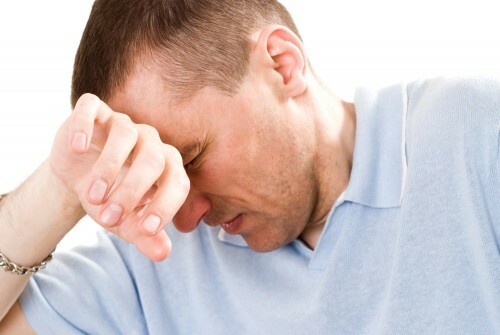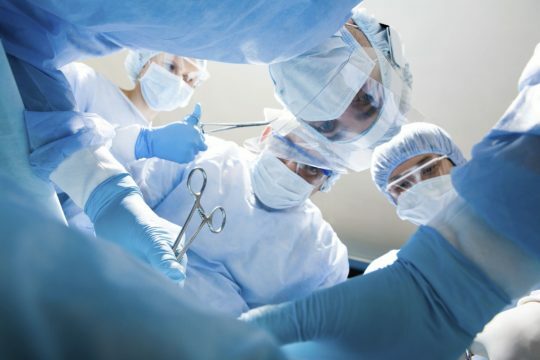The prostate gland is the organ of the reproductive system of the male body, which performs a number of vital functions. No wonder the ancient Greeks called the prostate the "second heart" of men. It emits a special fluid, which is almost half the volume of ejaculate and provides the activity of spermatozoa. Without her help, they are unable to go their long way and take part in the conception of a new life.
It is generally believed that the development of major prostatic diseases is more common in the elderly patients. And this is in some ways fair, but every year there are more and more men who suffer from different pathologies of this body.
Classification of prostate diseases

The basis of the division of diseases was the etiologic factor. Depending on the cause of this or that problem, they are:
- Infectious diseases of the prostate:
- acute bacterial prostatitis;
- chronic bacterial prostatitis.
- Non-infectious:
- chronic pelvic pain syndrome or non-bacterial prostatitis;
- benign hyperplasia( adenoma);
- cancer( adenocarcinoma).
The main cause of the first group of diseases is , a harmful microflora that affects the organ tissue of .The reasons for such an invasion can be the following:
- violation of the rules of intimate hygiene;
- is a sedentary lifestyle;
- improper intake of antibiotics, without following the instructions for their use.
As a result of such a population of the prostate, microbes form a hotbed of chronic inflammation with all the ensuing consequences and symptoms.
The condition for the development of the second group of diseases remains stagnation of venous blood in the small pelvis and processes of formation of atypical cells .
Symptoms of prostate diseases
In addition to the various causes of the occurrence and course of prostate pathologies, they are all united by a common pathogenetic mechanism of the formation of the main symptomatology - an increase in the size of the body itself .Because of this anatomical change, there is a squeezing effect of the urinary canal and small vessels that feed the prostate gland. All this leads to a number of common symptoms:
- Frequent and painful urination. This is the most common symptom of male organ disorders.
- Local discomfort or pain in the perineal zone. Because of the increased volume of the prostate, it compresses the peripheral nerve endings, thereby provoking the appearance of pain.
- Increases the local temperature. Blood congestion helps increase the permeability of cell membranes through which proinflammatory substances( histamine and prostaglandin) penetrate the parenchyma of the body. They take part in the processes of increased catabolism, as a result of which the temperature rises.
- Violations of the sexual function. Frequent violations are such as premature or retrograde ejaculation, a fall in sexual desire, impotence.
- Sometimes men have pain in the act of defecation and pathological impurities in urine ( pus, mucus, blood).
All these phenomena are typical for almost all the diseases mentioned above. But it is worth considering each disease of the prostate gland more closely.
Prostatitis

Inflammation of the male organ is probably the most common pathology in urological practice. Approximately every 40th man in the world suffers from this disease. The reasons for this widespread distribution are:
- Low-activity lifestyle and sedentary office work. These factors lead to stagnant blood in the pelvic organs and the prostate, which increases the risk of infection;
- Constipation defecation by type of constipation. Constant stool retention in the rectum in immediate anatomical proximity to the male organ facilitates the migration of pathogenic microbes into the prostate tissue;
- Subcooling of the body , repeated many times. Actual for drivers, security guards and other professions where unfavorable working conditions are possible;
- Too active sex life or its severe restriction. In any case, the male reproductive system is negatively affected;
- Frequent stressful situations, alcohol and smoking abuse, overeating .All this contributes to the overall weakening of natural defense mechanisms and increases the risk of prostatitis.
As can be seen from the reasons, a larger number of patients enter the clinic because of the modern way of life. For successful treatment and prevention of prostatitis you need to change it.
The first signs of developing inflammation of the prostate gland may be:
- a flaccid urine stream that falls rapidly down and does not reach 15 cm in length;
- trouble with the act of urination;
- no sense of complete bladder release;
- night desire to go to the toilet.
Other symptoms are similar to those described above. It is worth noting the fact that in young people who have an active sex life, prostatitis in most cases proceeds according to the type of acute infection with predominance of pronounced pain and intoxication syndromes with high fever. While in the elderly, the process with symptoms of dysuria and mild inflammation comes to the forefront.
Laboratory symptoms of such an ailment will be:
- increase in the level of leukocytes in the blood,
- increase in ESR,
- shift of the leukocyte formula to the left.
In the urine, neutrophils( inflammation cells), bacteria and, possibly, hyaline cylinders will be detected. In the case of pathological discharge, erythrocytes or atypical forms of cells can be attached here.
Syndrome of chronic pelvic pain
The etiology of this disease has not yet been established reliably. The main theories that scientists offer are:
- bacterial;
- is an autoimmune;
- is a viral;
- is a somatotropic;
- chemical.
It is very difficult to speak specifically, because there is no reliable evidence of any of them. Therefore, to date abacterial prostatitis remains a diagnosis of exclusion and can be exhibited only if it is impossible to confirm any of the other diagnoses of .
Speaking about the symptoms of the disease, it is necessary to pay attention to the fact that the pain syndrome and violations of sexual function in men come to the fore, which is not characteristic for bacterial infection. Pain is observed during ejaculation and during physical exertion. It is localized in the perineal region with possible irradiation on the back and in the groin.
There are no significant changes in blood tests in laboratory diagnostics. At a microscopic examination of urine a small amount of leukocytes and erythrocytes is detected.
The main disadvantage of this ailment is a decrease in the sexual function of men and sexual disorders, which greatly reduce the quality of life. This is the first reason for contacting a doctor.
Benign prostatic hyperplasia or prostate adenoma

This process is characterized by proliferation of parenchymal tissue of the organ with the formation of compaction areas( nodes), which becomes the basis for the emergence of characteristic symptoms.
The main reason for this growth is the hormonal shift in the body of the stronger sex with time. The disease is more typical for patients age 50 and older. At this time, the workings of their own sex hormones( androgens) decrease in the body of men and the production of female( estrogen) prevails. As a result - the occurrence of incorrect impulses in the brain and a violation of the prostate function.
Because of the increase in the size of the body, classical symptoms begin to develop with difficulty urinating and pain with this act.
It should be noted that the process is staged and involves progression over time. It manifests itself as follows:
- During the first phase, no pain is felt when you go to the toilet. The only change is the need a little podnatuzhitsya to direct the natural needs of .
- The second degree of hyperplasia already affects the frequency of urination - it increases with the maintenance of a normal amount of daily excretions. There is a feeling of incomplete emptying of the bladder.
- The third stage occurs when the prostate is so enlarged that the can not practically go to the toilet - a urinal is used. There are moments of incontinence, both in the daytime and at night.
Laboratory indicators of blood and urine can be normal. With ultrasound examination, a significant increase in the size of the organ is recorded. Its wall is smooth without infiltration into neighboring organs. The general condition of the patient is normal, if you do not take into account the disorders of urination.
Adenocarcinoma or cancer
This is the most life-threatening ailment of the prostate gland in men. It is still difficult to establish the main cause of the development of the atypical process in the tissue of the organ. The main factors that can serve as a "trigger" for the development of malignant neoplasm formation are:
- Genetic factor. It has been clinically proven that in a family where cancer patients have already met the risk of neoplasm in heirs is several times higher than in a healthy population;
- Incorrect power. This point remains very controversial, but there are publications and scientific studies, where the fact of more frequent development of this disease in people who in large quantities was taken by foods rich in animal fats and alcohol was proved;
- Smoking. An unchecked factor so far. However, because of his involvement in the development of other malignant tumors, he is at risk in this case.
The main plan in the course of the tumor process is a common intoxication syndrome and harmful effects of cells with uncontrolled growth.
In addition to the classic symptoms of urination disorders and sexual dysfunction, is associated with specific signs of the cancer. These include:
- symptoms associated with metastatic damage to other organs and systems( bone pain, edema of the lower limbs, in rare cases - paralysis);
- appearance of blood in the sperm;
- cachexia is a general exhaustion of the body with a pronounced loss in mass( up to 15 kg per month);
- anemic syndrome( pallor of the skin, dizziness, general weakness);
- loss of appetite;
- drowsiness;
- chronic fatigue.
At laboratory diagnostics in blood very small quantity of erythrocytes and a hemoglobin, depression of level of leukocytes is found out. In the urine, blood corpuscles may appear.
The main marker of the disease is the prostate-specific antigen( PSA). Its increase is most likely to confirm the diagnosis of the tumor process.
Any prostate pathology in men requires adequate treatment. The main problem remains the wrong attitude of the stronger sex to their own health. Often they try to lead a normal lifestyle even with the presence of early signs of prostatitis or any other problem. This leads either to the transition of pathology to the chronic stage or the occurrence of additional complications. Only at this moment patients remember about medicine and are obliged to undergo therapy where it could be avoided.



